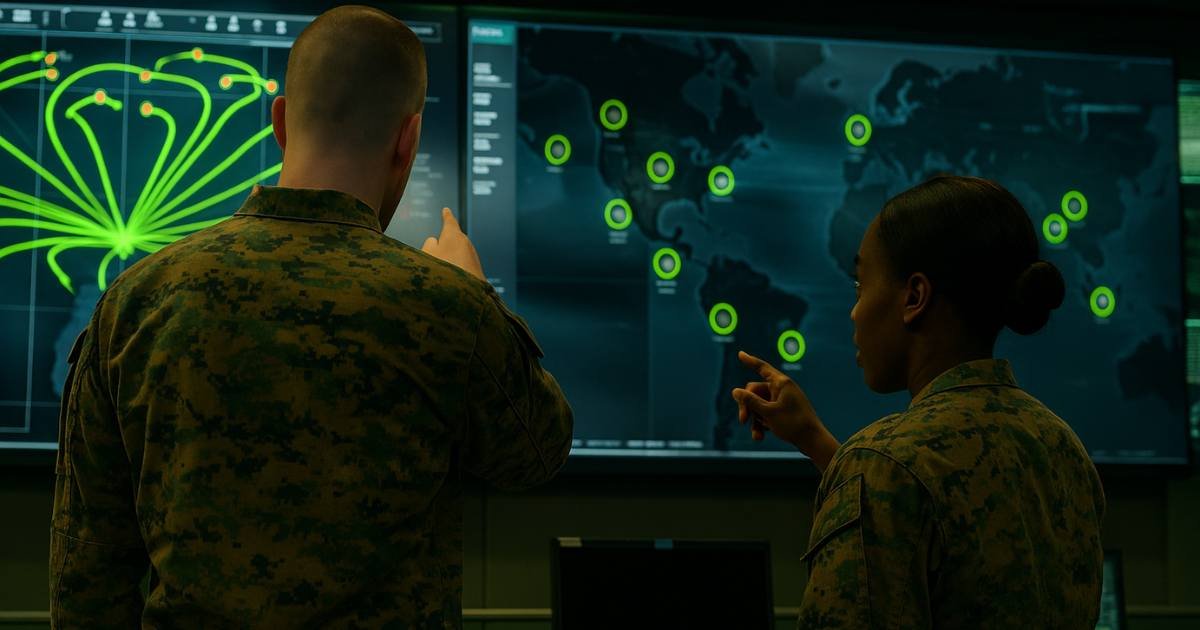London — The British government has announced a major defence overhaul with a focus on cyber warfare and artificial intelligence. Defence Secretary John Healey revealed plans to invest more than Rs 10,800 crore (£1 billion) in a new Cyber and Electromagnetic Command, aimed at countering growing threats from countries like Russia and China.
Speaking at MoD Corsham—the UK’s cyber warfare headquarters—Healey said the move reflects the urgent need to equip the military with modern tools to fight digital threats.
“The keyboard has become a weapon of war,” Healey said. “We are under daily attack, and this new command will allow us to defend and strike back more effectively.”
Key Developments
- A new Cyber and Electromagnetic Command will lead both offensive and defensive digital operations
- The unit will manage a Rs 10,800 crore (£1 billion) upgrade in AI-powered targeting systems
- A new Digital Targeting Web, also called the “kill web”, will connect military assets across land, air, sea, space, and cyberspace
- The project will be fully operational by 2027
The new command will form a central part of the UK’s Strategic Defence Review, scheduled to be released on Monday.
ALSO READ: FCRF Launches Campus Ambassador Program to Empower India’s Next-Gen Cyber Defenders
Offensive Cyber Capabilities
When asked if the UK’s cyber unit will have the authority to launch attacks on hostile nations, Healey was clear:
“Yes. The Cyber Command is about removing duplication, setting new standards, and giving new authority to both defensive and offensive cyber.”
This is the clearest signal yet that the UK is willing to conduct offensive cyber operations—not just defend against them.
What Is the Kill Web?
The Digital Targeting Web, or “kill web”, is designed to enhance the UK military’s ability to detect, track, and neutralise threats in real time.
It will:
- Use AI to link intelligence from satellites, ships, aircraft, and drones
- Allow seamless decision-making and faster battlefield response
- Support electromagnetic operations such as jamming and signal interference
For example, a space-based sensor could detect a threat, relay that data instantly to an F-35 fighter jet or naval drone, and allow for an immediate strike—digitally or physically.
Leadership and Coordination
The Cyber and Electromagnetic Command will be overseen by General Sir James Hockenhull, who leads UK Strategic Command. It will work alongside the National Cyber Force, which has been operational since 2019 and is jointly run by the Ministry of Defence and GCHQ.
This integration is aimed at streamlining both offensive and defensive cyber operations under a unified leadership.
ALSO READ: Who is Neal Mohan , The Man Google Paid ₹855 Crore to Stop From Joining Twitter?
Cyber Attacks on the Rise
The UK has seen a sharp increase in cyber threats:
- Over 90,000 cyber attacks on government systems in the past two years
- Doubling of major attacks since 2023
- Frequent targeting by Russia, China, and other hostile actors
- Cyber breaches affecting major UK brands such as Marks & Spencer, Harrods, and Co-op
A recent report by the Public Accounts Committee warned that outdated government IT systems are leaving the country exposed. It found that more than 25% of public sector networks still rely on legacy software.
Learning from the Ukraine Conflict
Healey pointed to lessons from the Ukraine-Russia war, where electronic warfare, signal jamming, and real-time coordination have played a decisive role in resisting invasion.
“Future conflicts will be won by those who are better connected, better equipped, and who innovate faster than their adversaries,” he said.
The new strategy shifts focus from traditional military strength to real-time digital connectivity and intelligence sharing.
Building a Skilled Cyber Force
To support the growing demand for digital defence, the Ministry of Defence is also fast-tracking cyber specialists through its Cyber Direct Entry programme.
This allows highly skilled individuals to enter the military directly into cyber roles, bypassing traditional training paths and bringing expertise to the field quickly.
Turning Strategy Into Action
Healey criticised previous governments for failing to act decisively on cyber threats.
“You might have seen the talk—now you’ll see the walk,” he said. “By attracting the best digital talent and creating a new nerve centre for our cyber capabilities, we’ll ensure Britain is properly defended in the modern age—and ready to act.”
Why This Matters
The UK’s cyber strategy marks a major shift in modern warfare. As geopolitical tensions rise, and digital attacks become more frequent and damaging, building strong cyber defence and attack capabilities is no longer optional.
The new command and investment show that the British military is preparing for the future—one where wars may be fought with algorithms and data, just as much as with tanks and aircraft.
The focus is now on execution. Can the UK move fast enough to meet the challenges of a rapidly changing threat environment?


